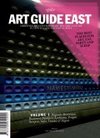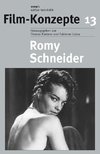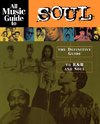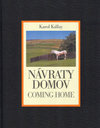
-
 Anglický jazyk
Anglický jazyk
Animal anatomy
Autor: Source: Wikipedia
Source: Wikipedia. Pages: 83. Chapters: Skin, Skeleton, Metamorphosis, Body cavity, Fin, Gill, Claw, Scale, Anatomical terms of location, Exoskeleton, Coelom, Countercurrent exchange, Sexual dimorphism, Abdomen, Tooth, Horn, Largest body part, Symmetry in... Viac o knihe
Na objednávku, dodanie 2-4 týždne
21.12 €
bežná cena: 24.00 €
O knihe
Source: Wikipedia. Pages: 83. Chapters: Skin, Skeleton, Metamorphosis, Body cavity, Fin, Gill, Claw, Scale, Anatomical terms of location, Exoskeleton, Coelom, Countercurrent exchange, Sexual dimorphism, Abdomen, Tooth, Horn, Largest body part, Symmetry in biology, Gizzard, Eyespot, Body plan, Cuticle, Tail, Cloaca, Isomer, Suture, Parietal eye, Tripedal, Autotomy, Interstitial fluid, Carapace, Stinger, Lateral line, Proboscis, Tentacle, Deaf animal, Tusk, Plastron, Endocast, Snout, Leg, Armour, Egg tooth, Thorax, Sexual mimicry, Barbel, Gular skin, Tubercle, Scute, Prehensility, Electroantennography, Endoskeleton, Spermatheca, Muscular hydrostat, Rostrum, Odontode, Dorsum, External gills, Corniculate, Patagium, Flipper, Proventriculus, Appendage, Lamella, Manus, Raptorial, Corneous, Eyestalk, Polar capsule, Nomina Anatomica Veterinaria, Spongy tissue, Tail vein, Polar filament, Dorsal nerve cord, Typhlosole, Entire, Forelimb, Siphon, Robustness, Superior mouth, Rumpless, Genital papilla, Hindlimb, Brachyptery. Excerpt: Standard anatomical terms of location are employed in science which deal with the anatomy of animals to avoid ambiguities which might otherwise arise. They are not language-specific, and thus require no translation. They are universal terms that may be readily understood by zoologists who speak any language. Unfortunately, while these terms are standardized within specific fields of biology, they can differ dramatically from one discipline to another. Differences in terminology remain a problem that, to some extent, still separates the fields of zoological anatomy (sometimes called zootomy) and human (medical) anatomy (sometimes called androtomy). The Craniata (vertebrates) share a substantial heritage of common structure, allowing much of the same terminology to be used for all of them. It is necessary for this terminology to be based on the anatomy of the animal in a standard way to avoid ambiguities such as might occur if a word such as "top" were used, which might designate the head of a human but the left or right side of a flounder. Most animals, furthermore, are capable of moving relative to their environment (see Fig. 1). So while "up" might refer to the direction of a standing human's head, the same term ("up") might be thought to point the direction to the belly for a supine human (at least, a sufficiently stout one). It is also necessary to employ some specific anatomical knowledge in order to apply the terminology unambiguously: E.g. while the ears would be superior to (above) the shoulders in a human, this fails when describing the armadillo, where the shoulders are above the ears. Thus in veterinary terminology, the ears would be cranial to (i.e. "towards the head from") the shoulders in the armadillo, the koala, the kangaroo, or any other vertebrate, including the human. Similarly, while the belly is considered anterior to (in front of) the back in humans, this terminology fails for the flounder, the armadillo and the dog (although it could work for t
- Vydavateľstvo: Books LLC, Reference Series
- Rok vydania: 2013
- Formát: Paperback
- Rozmer: 246 x 189 mm
- Jazyk: Anglický jazyk
- ISBN: 9781156392508







 Ruský jazyk
Ruský jazyk 



 Nemecký jazyk
Nemecký jazyk 
